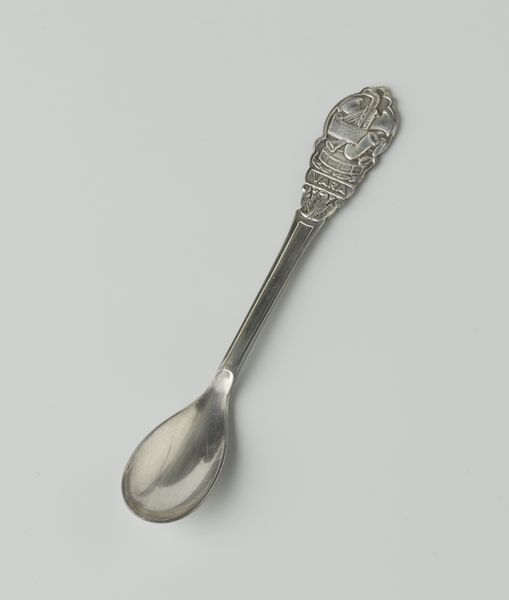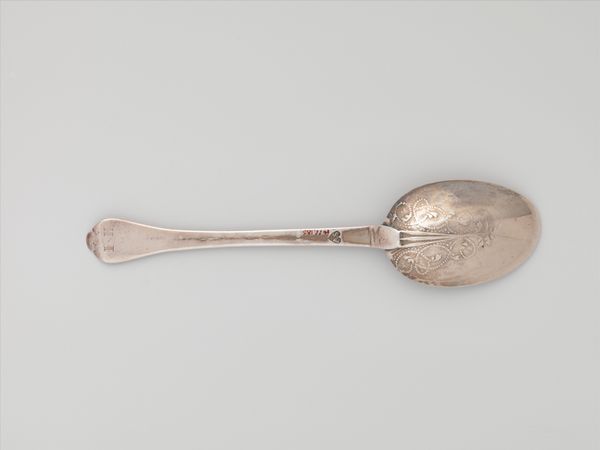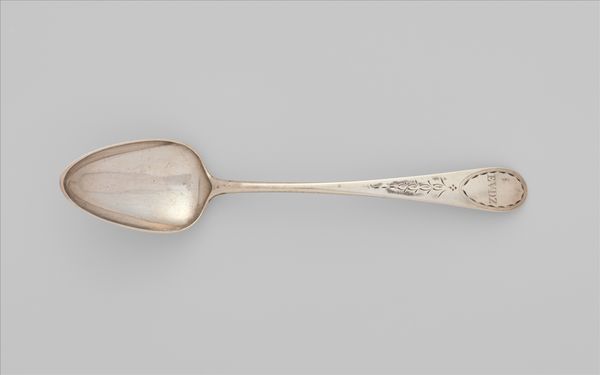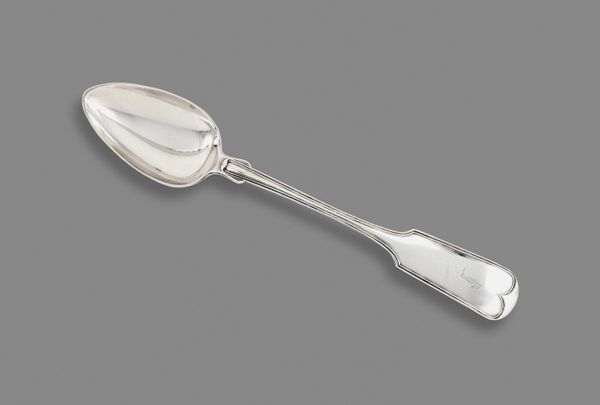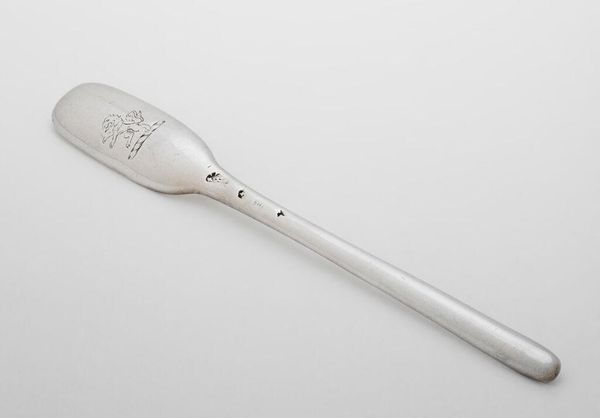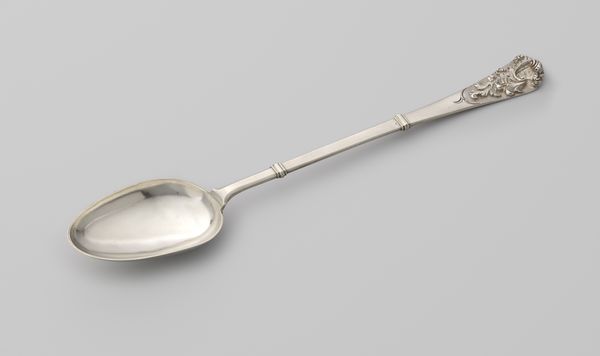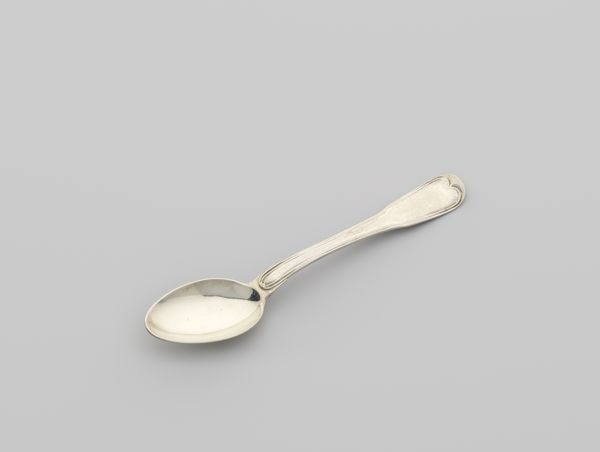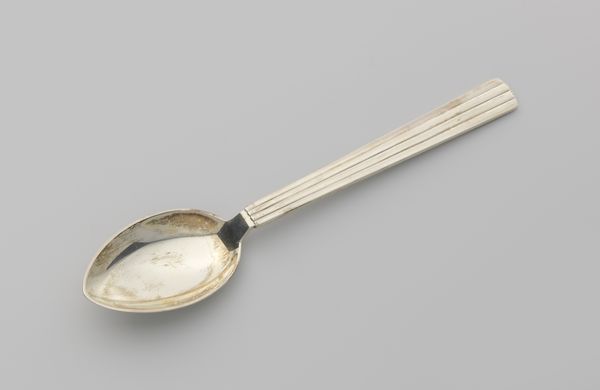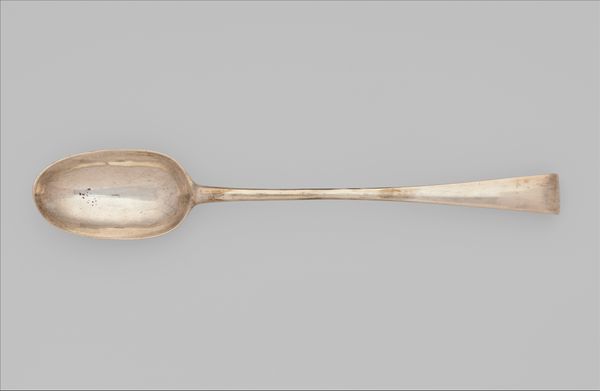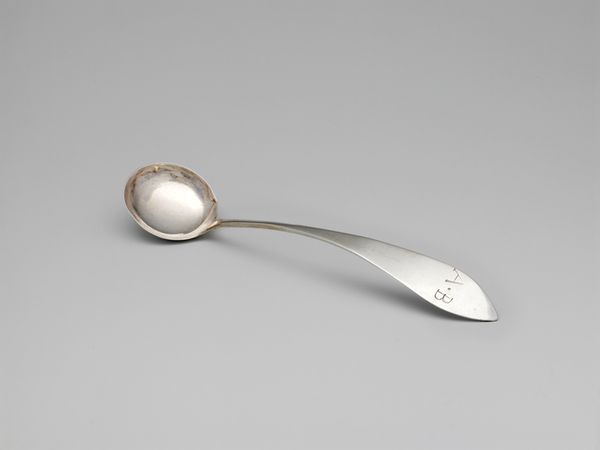
silver, sculpture
#
art-nouveau
#
silver
#
sculpture
#
decorative-art
Dimensions: length 14.4 cm, width 3.1 cm, depth 1.9 cm, weight 32.0 gr
Copyright: Rijks Museum: Open Domain
Curator: Let's take a closer look at this "Suikerschep," or sugar scoop, crafted in 1915 by Georg Jensen. Editor: Immediately, I'm struck by the quiet luxury it exudes, even though it’s a humble object. The gleam of the silver suggests careful crafting and a certain affluence, and it appears to be more substantial in size than one might think. Curator: Absolutely. The choice of silver isn't arbitrary. Silverware, throughout history, has been loaded with symbolic weight. Think of its association with ritual, purification, wealth... Even folk tales often portray silver as holding protective qualities. Here, it elevates a functional tool to something more symbolic. Editor: True, and I’m drawn to the handwork involved. You can see evidence of the chasing and repoussé techniques – giving life to the art nouveau embellishments. The design, simple though it is, must have required skill. How many hours of labor went into producing each one? Was this destined for an upper middle-class household to signify status? Curator: Possibly, and the Art Nouveau influences in the stylized organic motifs, particularly around the handle, echo a broader cultural desire to reconnect with nature. We see the lingering tendrils of romanticism through its celebration of craftsmanship. Editor: The design and the use of silver, of course, impacted the price point for consumers. Thinking about who made it, and for whom it was intended, tells us so much about the class structures in Europe at the turn of the century, and Denmark specifically. Did Jensen, I wonder, ever reflect upon the social implications of his craft? Curator: An interesting point to consider. Jensen, after all, sought to bridge art and design, making beautiful, everyday objects available to a wider public. He also encouraged collaboration with his workshops and was very involved in the craftsmanship of each piece. Perhaps in Jensen's view it was about transforming our mundane routines into aesthetic experiences. Editor: Yes, transforming daily routines, rituals even, of having a cup of tea for instance. I still wonder though about the degree of labor that was accessible to the everyman, beyond their simple function. Curator: Food for thought indeed. Well, perhaps what strikes me most is the enduring power of simple objects to mirror a world of cultural meanings and class aspirations. Editor: Yes, this simple sugar scoop really does offer more than meets the eye, it's a subtle reflection of the world it came from.
Comments
No comments
Be the first to comment and join the conversation on the ultimate creative platform.

